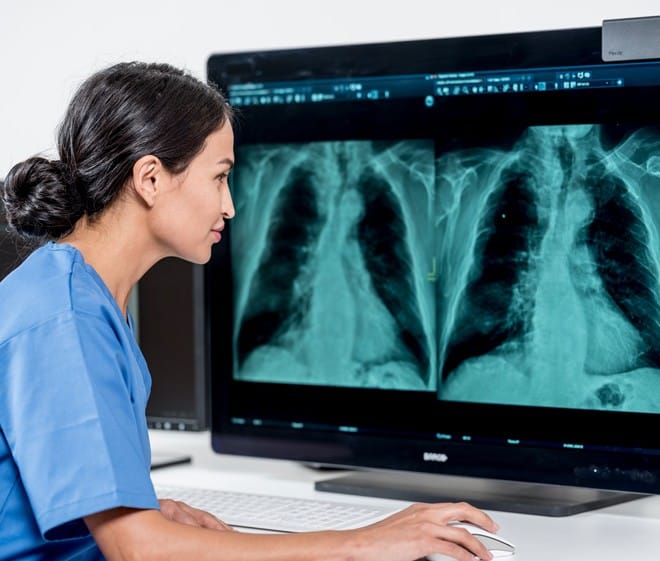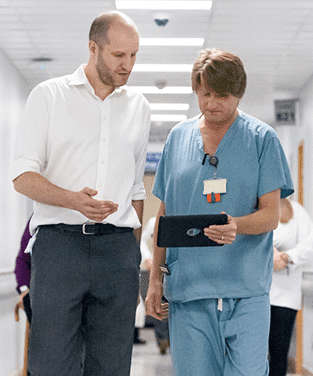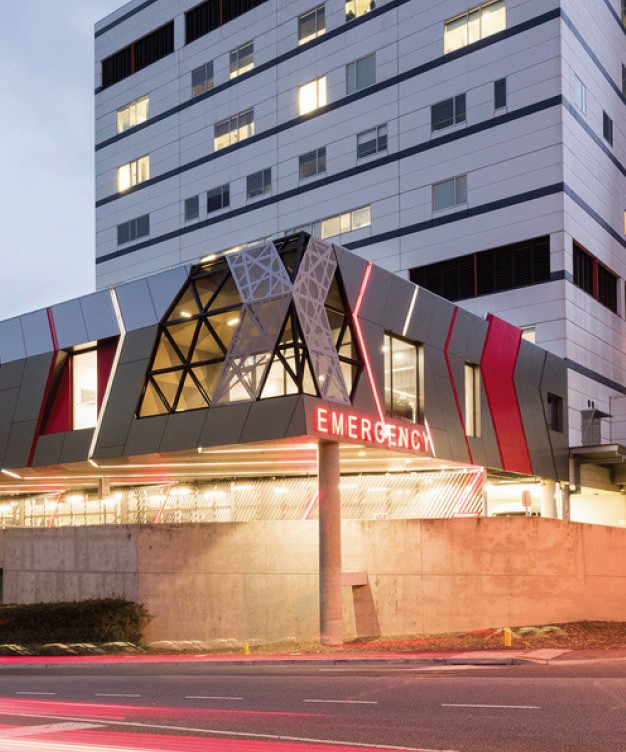Federated image networks: stronger together
With the AGFA HealthCare XERO® Exchange Network, fast, easy image and report sharing within your network supports more informed and efficient care.
Joining a healthcare network can offer real efficiency, cost and care benefits: whether you are a small community hospital or a large enterprise; a general hospital or a specialist clinic; a separate legal entity or an affiliate to a larger group.
Don’t let image sharing be a roadblock! With XEN – the XERO Exchange Network – you can create a real federated image network, without traditional image sharing solutions or even a VNA. By building a timeline view of all images, no matter where they reside, you can create a true longitudinal patient imaging record, available throughout your network. Images and reports are available from anywhere in the network.
“Rather than going through the process of transferring images from one place to another, I can look into other PACS systems across the region, without having to transfer anything. I have rejected and cancelled multiple imaging requests because I’m so much better informed.”
XERO Exchange Network : 1 list, 1 view
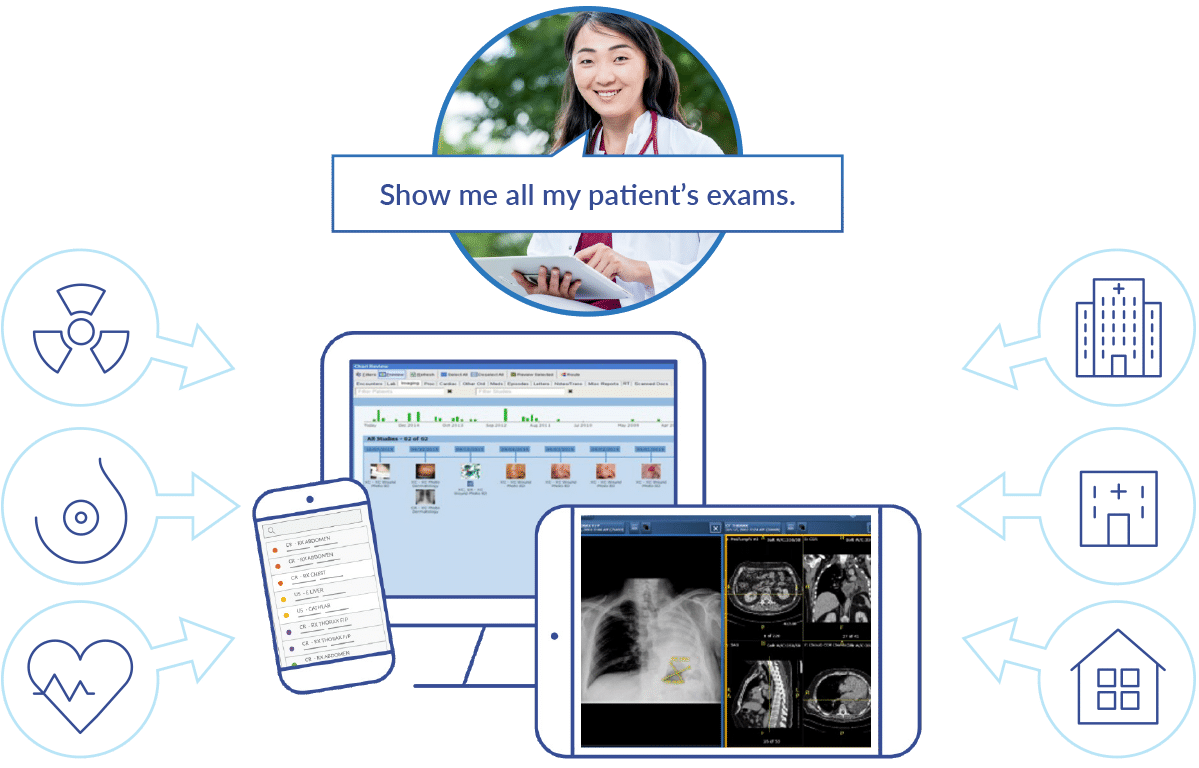
Fast and easy image access
How much time is lost because patients, clinicians and radiologists don’t know where a specific image is located?
With XEN:
- All images are available, regardless of where they reside.
- Image sharing is completely transparent for the user: they don’t see the process, just the images, presented in a single view.
- New images are available seconds after acquisition, from anywhere in the network.
Sharing images across facilities should be easy and invisible:
for patients, clinicians, radiologists, administrators, etc.
A XEN network makes that possible, with:

Faster image access:
there is no request-response delay, and the wait for images shrinks from hours, to just seconds.
Improved image and report access:
all data are immediately available, not just the images are viewable.

Easier workflow:
no one needs to make a request or response, and there is no PACS reconciliation to do.

Reduced costs:
XEN eliminates CDs, PACS storage and image exchange costs!
What does your XEN look like?
XEN can be flexibly configured to meet the needs of your network. A few examples:
- Your organization can opt for one centralized VNA and one backend system.
- Your organization can connect to third-party systems.
- You can have a XERO node at each location in the network.
- XEN can be integrated in an EHR or Portal. It also supports standalone deployments.
- One site can query other sites, but not vice-versa, etc.
Integrating clinical imaging
Different imaging systems, patient IDs, physical networks, policies for requesting information…
It all adds a lot of complexity to sharing images across a network. What’s more, the time and effort of requesting and then transmitting image data slows down already-busy workflows, while delays can slow the delivery of patient care and impact patient satisfaction. Finally, with patients travelling to different facilities for care, their images are everywhere: a local PACS, a VNA, other sites. All of which act as siloes.
The XERO Exchange network
With XEN, the XERO technology becomes the foundation of a federated image network,
sharing images between departments, systems and locations. Yet it requires:

No traditional pushing/pulling with image sharing solutions

No VNA storage or interaction

No CD/DVD creation or reading image exchange

No need for the same patient ID domain
Instead, your XERO universal viewer reaches out to multiple back-end image management systems simultaneously – including third-party image management systems throughout the network – queries them for the data needed, and streams the images to the user’s viewer. And it all happens automatically, without any effort by the user.
Easy, ubiquitous image sharing
XEN makes image sharing easy and cost-effective:
- There is no need for CDs, image exchange or relocating of images.
- All facilities use a common, shared viewer.
- XDS is not required – and it’s faster than XDS!
True, real-time federation
- Each facility in your network can continue to use its own image management systems, and its own patient ID domain.
- A XERO node at each facility links the facilities and their display technology together.
- As an additional option, you can create or use a Master Patient Index for imaging, by matching patients across facilities.
- The different facilities can be connected through https or a private VPN.
- XEN only sends queries to facilities that have the requested data; it automatically blocks any that don’t have the data.
- It provides thumbnail views of the images, which can be seen in one view.
- Image data is not moved from where it resides; it is streamed to the user directly from the host system.
- Authorized users can initiate a DICOM C-Move of the data if they need a local copy of it
More information on Federated image networks
Fill out the form below and we will get in touch with more information.
XEN supports the following connectivity standards and frameworks:
- DICOM
- DICOMweb
- WADO
- FHIR
- IHE
- XDS
XEN requires:
- Enterprise Imaging 8.1.2 or newer
- Network (https or VPN)
- Image sharing agreement between partners
What is a network?
- Referral Networks
- Affliate Networks
- Pediatric Networks
- Trauma Networks
- Stroke Networks
- Burn Networks
- and more …



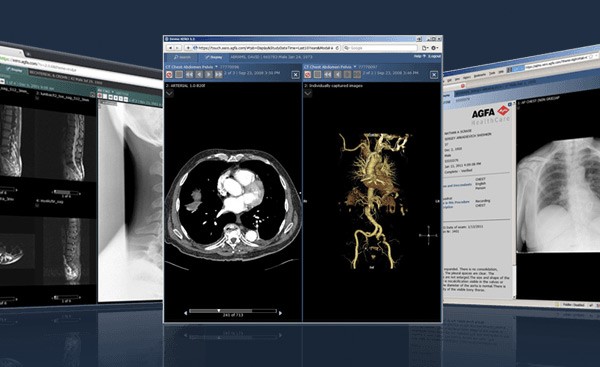

 Mitigating a surge in demand with integrated technology at Princess Alexandra Hospital NHS Trust, UK.
Mitigating a surge in demand with integrated technology at Princess Alexandra Hospital NHS Trust, UK.


